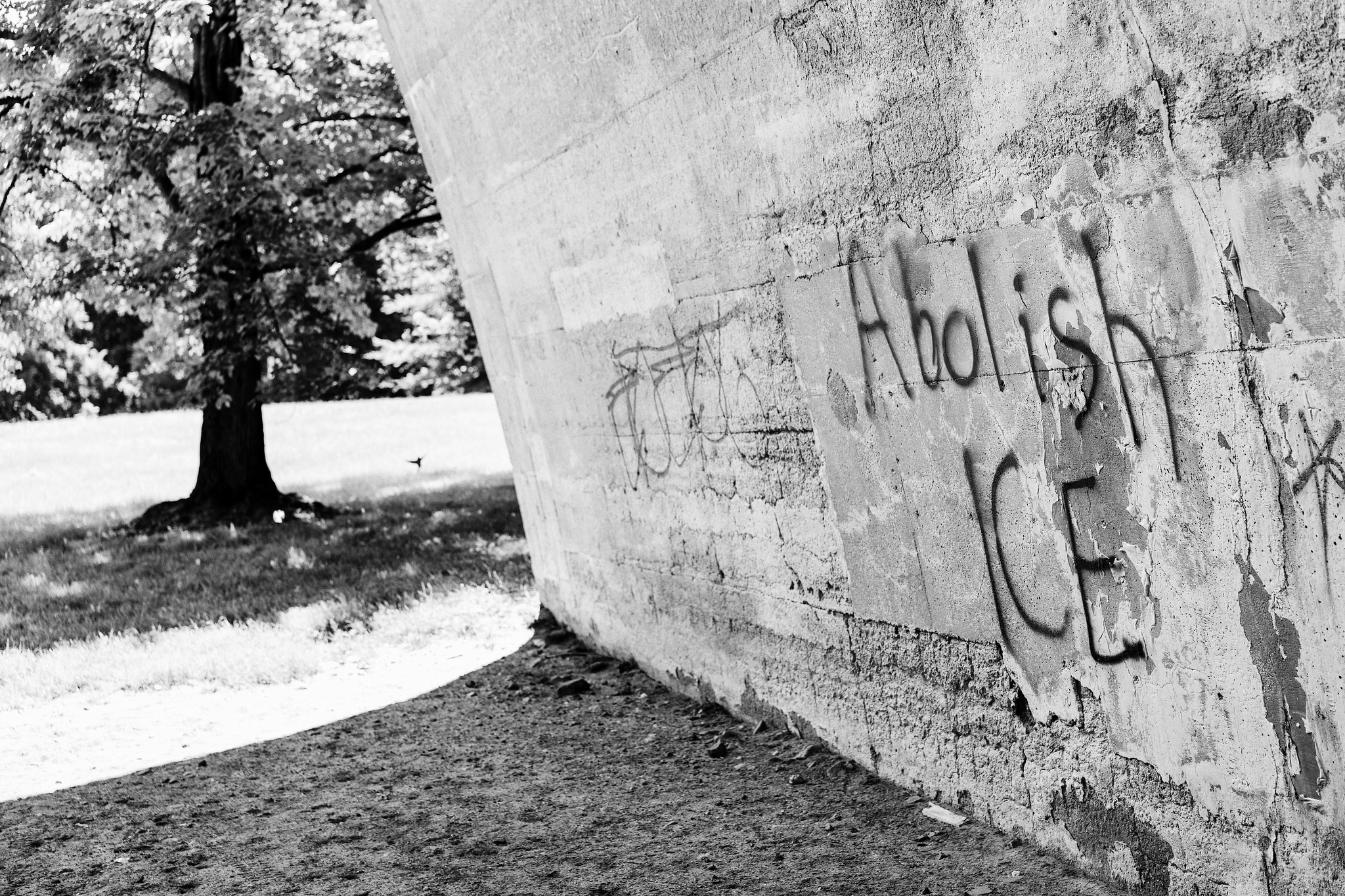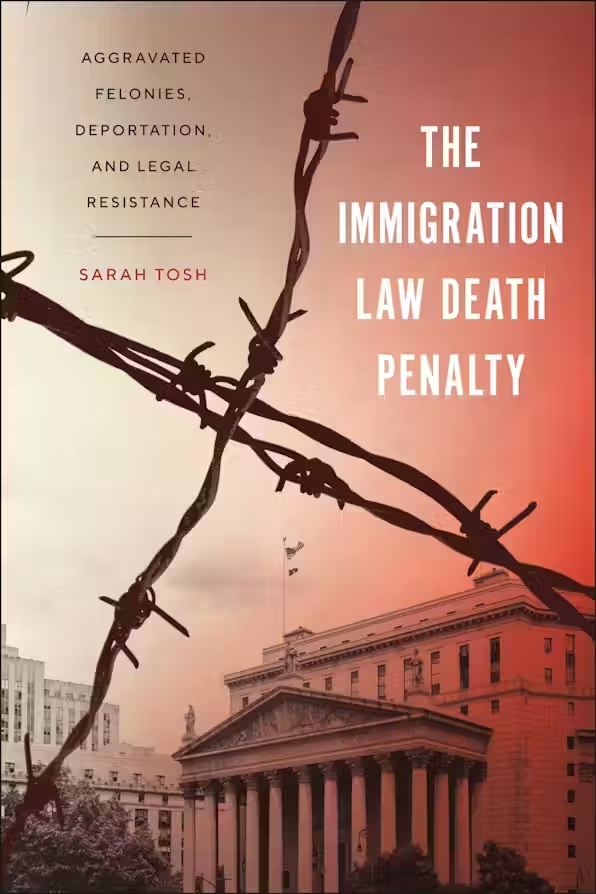Introduced in 1988 and expanded over the following decade, the “aggravated felony” demarcates a range of crimes for which noncitizens, both documented and undocumented, can be deported. Limited to murder, arms trafficking, and drug trafficking when first conceived, this immigration classification now includes thirty-five offense types, together encompassing thousands of state-and federal-level criminal convictions. Convictions in this category need not be “aggravated” nor “felonies” at all, but instead comprise a wide gamut of offenses—including misdemeanors—ranging from check fraud and shoplifting to arms trafficking and murder. The aggravated felony is known to lawyers as the “immigration law death penalty” because noncitizens convicted of aggravated felonies are subject to mandatory detention and almost certain deportation as they are made ineligible for nearly all forms of legal relief from removal.
To fully grasp the everyday impacts of the aggravated felony, we must consider the category’s place at the juncture between criminal and immigration law—the “crimmigration” nexus. Scholars of crimmigration have demonstrated the increased intertwining of immigration and criminal legal systems over the past thirty years—a period during which both legal bodies have become more expansive and retributive—resulting in a variety of negative outcomes for immigrants ensnared at the crux of the two in the United States and other migrant-receiving countries around the world.
The aggravated felon is a key example of the crimmigration nexus. From the enforcement strategies through which migrants are apprehended in the first place to the convictions that permanently mark them as subjects for mandatory detention and almost certain removal, criminal legal system processes, decisions, and categorizations play a central role in aggravated felony–based deportation. Yet despite a longstanding and extensive body of research documenting the pervasive disparities, racial and otherwise, plaguing U.S. systems of criminal justice—and an increasing societal attention to such inequality—official criminal markers are continually taken at face value and used to invoke enhanced punishment and exclusion in the immigration context.
An important development that has emerged, alongside the contemporary union of criminal law and immigration law, is the devolution of immigration law enforcement to local jurisdictions. For most of U.S. history, immigration was almost exclusively a federal matter, and local law enforcement bodies dealt mainly with matters of criminal law. Over the past thirty years—an era characterized by the neoliberal “hollowing out” of the federal government—the emergence of policies that increasingly link deportation to criminal offenses, and the growing treatment of unauthorized immigration itself as a criminal offense, have further contributed to an influx in local police departments’ attention to immigration enforcement. Federal immigration policies put in place during the past few decades—such as 287(g) agreements and the Secure Communities program—officially place immigration enforcement capabilities into the hands of local police departments.
As a so-called sanctuary city, New York City law prohibits municipal law enforcement from participating in or cooperating with 287(g) agreements. Furthermore, the city refuses to honor detainers (requests by ICE to hold noncitizens charged or convicted of crimes, usually based on information received through Secure Communities) and has removed ICE’s official access to Rikers Island, the city’s largest jail. Still, these measures only do so much for the city’s immigrants, and especially for those with potential aggravated felonies. ICE and other immigration enforcement entities can still make arrests throughout the city, and they have increasingly targeted noncitizens in NYC in their homes and communities.
More from our decarceral brainstorm
Every week, Inquest aims to bring you insights from people thinking through and working for a world without mass incarceration.
Sign up for our newsletter for the latest.
Newsletter
Instated in 2014 at the urging of community-based advocates, NYC’s detainer policy prevents municipal jails and police from honoring ICE requests to hold noncitizens released from criminal custody. While several lawyers saw this as an important win for local immigrants with criminal records, most agreed that ICE had evolved their apprehension methods to the new circumstances. Nora, a public defender for eight years, thought that the detainer policy was an important victory, saying, “It’s better, in a sense, because we’ve challenged the law on that.” However, she went on to qualify: “But obviously things are much worse in that we’ve seen like a 900 percent increase of ICE just grabbing our clients after their case is called, because they don’t need an ICE detainer or an ICE hold. They physically just grab them anytime they are coming and going from their court dates. So that’s the negative. They’re finding another way.”
Soon after Donald Trump came into office, ICE became particularly vocal about their displeasure with NYC’s detainer policy, issuing detainers they knew would be turned down in an attempt to shame the city for releasing “dangerous criminals.” The agency also turned to more intrusive and expansive enforcement methods and blamed them on NYC’s refusal to honor detainers. ICE arrests in NYC increased by 88 percent between fiscal year 2016 and fiscal year 2018—the third-highest increase of arrests of all ICE field offices. This included what was actually a 1,700 percent increase in ICE arrests and attempted arrests at New York State courthouses between January 2017 and December 2018.
The harsh and unequal effects of the aggravated felony category are upheld by a “good immigrant, bad immigrant” binary that paints migrants with criminal records as a monolithic group undeserving of residence, citizenship, or even basic rights. The aggravated felony supports this false dichotomy by making it so that noncitizens with convictions that fall within the category are not tried as unique cases with a variety of individual and structural factors that should be taken into account, but rather as “aggravated felons”—serious criminals who must be detained and removed with as little chance for legal relief as is allowable by international law. Anchored by the racialized “criminal alien” folk devil that has held such influence throughout the history of this country, this binary rationalizes the funneling of Black and Latinx immigrants to deportation while further crystalizing the importance of criminal legal system markers that uphold broader social hierarchies.
New York’s established network of public interest lawyers and legal rights organizations has been central in constructing an environment conducive to creative and effective legal responses to the aggravated felony. Yet underlying the development of the protective policies and practical resources that support such legal resistance is a broader struggle led by immigrant communities impacted by the aggravated felony and the punitive deportation pipeline of which it is a part. Central to any form of resistance to the aggravated felony is the ongoing work of community-based activists who have fought to expose the false “good, bad” immigrant binary. In doing so, impacted communities and supporters wage intersectional resistance at the crimmigration nexus against the aggravated felony, the criminalization-to-deportation pipeline, and the broader structures and beliefs that support their existence.
George, an immigration lawyer and advocate for thirty years, explained that while it is important that lawyers “try to be very good at technical things,” there must also be a “community organizing aspect.” He emphasized “communities in struggle as the motive force of social change, not lawyers winning things in court rooms.”
Raina, a public immigration lawyer with six years of experience, described legal representation as “one key aspect” of resisting aggravated felony–based deportation, but continued: “It’s not always the most important. There are plenty of people with aggravated felonies that have no relief, or that their relief is really difficult to obtain, and in that case the lawyers are really not that necessary, are not that helpful, and really what’s the most helpful is the community—community support and advocacy.”
Zara, an immigration attorney, criminal defender, and advocate with ten years of experience, agreed, saying, “I don’t like to be like, ‘lawyers are the answer,’ because [we’re] not.” Instead, “it’s really important that the movement come from impacted people” since “communities are seeing what this is doing and have been seeing it unfortunately for a long time.” For Zara, community organizing around crimmigration-related issues is central to increasing public understanding that “the 1996 laws that created a lot of these things . . . or enhanced them need to be changed.” Otherwise, “as much as we can make all these creative arguments, as long as these laws stay in place, there’s only so much lawyers can do.” In this punitive context, Raina referred to the role of lawyers as “harm reduction” and pointed to community support as “essential” for any real progress.
The voices of radical activists in coalition with broader social movements, such as those for racial justice and LGBTQ rights, are a key emergent force shaping today’s immigrant-led resistance. Beyond reforms to immigration and criminal legal policy, intersectional activism stresses the need to address the societal hierarchies such policies work to uphold. One longtime organizer with Families for Freedom spoke to the broader structural context reflected by the aggravated felony: “Understand, all of this is not necessarily based on criminalization or immigration per se. It’s based, from our point of view, on population control or the preservation of white supremacy. Any which way they could remove the other, they were going for it.” While framed as though “we’re getting rid of undesirables,” the organizer said, “It’s not. It’s the same population [that is consistently targeted for criminalization]. It’s social control, [ethnic] cleansing, and whitening of the other.” In his view, while amending the legislation around the aggravated felony would be helpful, without addressing broader racial hierarchies and systemic inequality, impacted groups will continue to experience oppression. He said, “if it’s not an aggravated felony tomorrow because we fight and we win, it will be something else.”
Thus, for immigrant groups disproportionately targeted by the criminal legal system, immigration reform is not enough. As legal scholars Annie Lai and Christopher Lasch explain, even “de-linking immigration [enforcement] from crime control, without more, risks entrenching problems with the broader system of crime control that affects non-citizens and citizens alike.” Therefore, in order to truly provide justice for immigrants with criminal records, we must question what it means to be an “aggravated felon,” a “bad immigrant,” a “criminal alien,” or even a “criminal” at all. It is through this deconstruction that we move beyond oversimplified binaries, to expose the socially constructed nature of laws and categories that invariably serve to exclude and punish.
Excerpted from The Immigration Law Death Penalty: Aggravated Felonies, Deportation, and Legal Resistance by Sarah Tosh, reprinted with permission from NYU Press.
Image: Mike Maguire/Flickr


